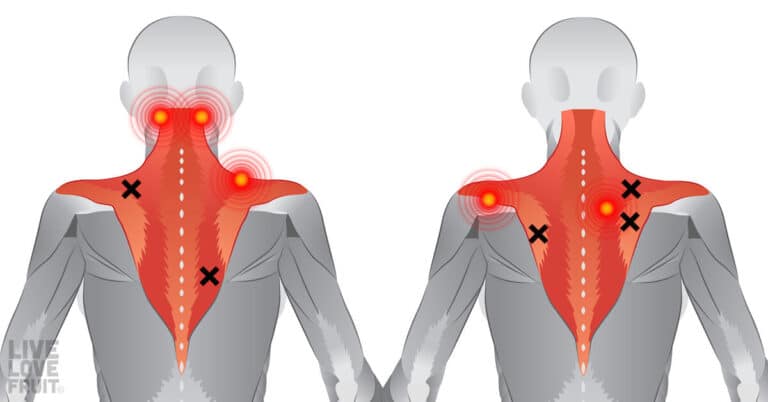Neck discomfort affects over one-third of people of working age, making it one of the most common musculoskeletal disorders known to medical specialists. As you read this on your screen, you are undoubtedly feeling strained muscles in your neck and tense shoulders. Time spent in front of displays, or more specifically, the way we sit when interacting with screens, combined with poor posture, can overwork the muscles in the neck and shoulders, causing discomfort and stiffness.
“When it comes to pain, being proactive is the best solution for long-term relief,” says Gudrun Snyder, an East Asian acupuncturist. “This is the best solution to long term suffering.” “Movement, healthy eating habits, and including things like acupuncture, yoga, or other self care regimens into your daily routine make a huge difference.” It seems to reason that modifying our lifestyle choices can alleviate the stress caused by a sedentary existence. You may call it poetic justice. According to Theresa Marko, a physical therapist, stiff neck and shoulders can also be caused by weakness in other muscles of the body, such as the arms, when doing jobs requiring stability. “This weakness causes the neck muscles to activate to help stabilize the arms and shoulders,” the doctor explained.
Our specialists provide numerous methods for relieving tense and tight muscles in the neck and shoulders.
-
1 Adjust Your Desk Setup
Let's start with one of the biggest offenders: the design of your place of employment. Physical therapist Christynne Helfrich, PT, DPT, OCS, of Hinge Health, thinks that having a workstation that is appropriate and unique for you can make a big difference. This is true even if there isn't a single posture that works best for everyone.
"Keeping your display at eye level can help keep your head and neck in a neutral, relaxed position; your elbows should be comfortable on an armrest or desk."Furthermore, as Helfrich clarified, it is advantageous to keep your wrists in a neutral position when typing or using a mouse. -
Advertisement
2 Take a Break
One of the most effective techniques to reduce stiffness in the shoulder and neck muscles is to spend less time in one posture. "Spending long hours at your computer or on your phone can lend itself to stiffness and pain from immobility in your neck and shoulders," according to Dr. Helfrich. "Take one to two minutes every hour to move your head from side to side to help stretch out the neck and shoulder muscles."
-
3 Perfect Your Posture
In today's technology-driven world, shoulder and neck pain are quite common. "Our neck and shoulders are frequently the first to feel the effects of stress, whether it be from staring at our phones, working on our computers, or simply the stress of everyday life," according to Snyder. When it comes to guidance, my first recommendation is always to start with posture. Roll your shoulders back and pull your shoulder blades together. The movement should be so simple that it almost appears painful, but it should feel fantastic. If you spend your entire day working on a computer, you should consider doing this every hour. Making even minor adjustments to your posture can have a huge impact on how you feel. Mastery comes with repetition, and your body will quickly align with this new position, allowing it to reset the awful posture it has previously maintained.
-
Advertisement
4 Do Some Shoulder Rolls
In addition, Helfrich advocates finishing the tried-and-true favorite of gym warm-ups, the shoulder roll. Rolling your shoulders helps to release the muscles and tendons that surround the shoulder joint. This helps to relieve tension and tightness, enhance blood flow, and boost mobility.
Helfrich gives the following recommendations for the finest shoulder rolls: Squeeze your shoulder blades down and back, bringing them closer to your ears. Roll your shoulders forward, then bring them forward. Finally, return your shoulders to their neutral posture. You can also perform the motion in the opposite direction, which is to elevate your shoulders towards your ears, then roll your shoulders back while pressing your shoulder blades together, and finally roll forward and back to the starting position. -
5 Use a Foam Roller
By utilizing foam rollers, one can alleviate the tightness and tension that is present in the muscles of the neck, shoulders, and upper backs. Marko and Kieran Sheridan, a sports physiotherapist, promote myofascial release, which includes foam rolling, in order to work out muscle knots, alleviate stress, enhance blood flow, and minimize muscle soreness. Myofascial release is also known as myofascial release.3. 3)
Your head and hips should be supported while you lie down on a foam roller. What are your thoughts? The foam roller should be positioned so that it is directly beneath your spine. While the backs of your forearms are lying on the ground, bring your arms out to construct goal posts with your elbows bent at a 90-degree angle around your torso. This should be done at the same time if you want to build goal posts. At this moment, pause for a bit and take five deep breaths while you are in this position. At the same time as you move your arms up and down as much as feels comfortable, make sure that they are bent and resting on the floor. You should breathe into your back and move your arms up and down while moving from the bottom of your shoulder blades to the top of your shoulders. This will help you achieve a healthier posture. -
Advertisement
6 Try a Massage Gun
When it comes to addressing minor muscle knots and tense areas, Sheridan, Helfrich, and Marko all recommend utilizing a massage gun in addition to or instead of foam rolling. Instead of focusing on your bones or joints, make sure to massage your muscles with a massage gun.
To comfortably access the muscles in your shoulders, upper back, and neck, position the massage gun at a 90-degree angle and keep your hand perpendicular to the handle. This allows you to easily turn the massage pistol upside down. Begin with the slowest tempo and intensity level and gradually raise it as you get more comfortable. Try to focus on each spot for thirty seconds to two minutes.
If you have a history of strokes, do not use a massage gun on your neck. If you are concerned about your risk factors, consult a healthcare specialist. -
7 Get a Beauty Roller
Snyder recommends taking a more moderate approach when the idea of higher intensity produces more anxiety than it alleviates. This is Snyder's recommendation. Mount Lai's Tension Melting Massager is one of my favorite items to utilize as part of my evening ritual. "After a long day, this is a very simple do-it-yourself tool that you can make at home, and it feels so good," she says. "All you need to do is follow the instructions provided, and you'll be done! Eventually, the soreness and tension will pass. The fact that there is no way to do it incorrectly or cause any further pain or discomfort is the primary reason I choose this piece of equipment over many of the other at-home options available.
-
Advertisement
8 Get a Deep Tissue Massage
A deep tissue massage is an excellent method to pamper yourself while also releasing tension in the muscles of your neck and shoulders. When you receive a professional massage, you can unwind, reflect, relax, and enjoy the experience.
Helfrich recommends massage to help with the release of any trigger points in the muscles that are causing tightness or dysfunction. "Follow any massage up with some gentle stretching to help maximize the benefit," she advises. -
9 Squeeze Your Scapulae
These triangle-shaped bones in your upper back are known as scapulae, and they connect to a multitude of muscles in your back and shoulders. According to Helfrich, squeezing your shoulders and neck together helps release tight muscles and relieve stress in those areas.
"Try to pinch your shoulder blades together and hold for five seconds; repeat ten times throughout the day," proposes Helfrich. "This move is simple to perform on a daily basis." -
Advertisement
10 Stretch Your Trapezius
According to Sheridan, extending your trapezius muscles can assist ease stress and tightness in both those muscles and the muscles around them. Because symptoms of trap pain and tenderness are directly related to stress in the neck and shoulders, addressing these issues may help alleviate your symptoms.1.
The trap portion includes stretches such as the cobra stance, ear-to-shoulder stretch, and cat-cow pose. If you want to get rid of knots in your neck and shoulders, try some exciting poses or a relaxing morning yoga routine.



0 Comments